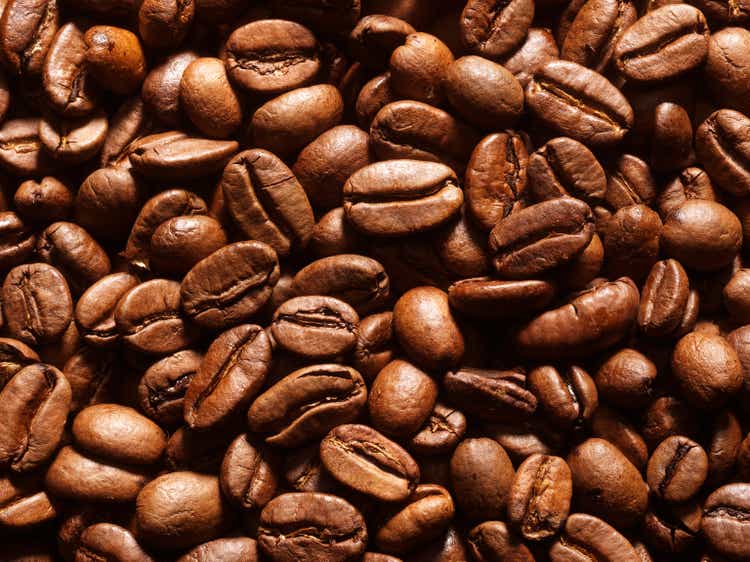
Jump rope game featuring Cheol-su and Young-hee (Squid Game season 3)
Courtesy of NetflixTwo weeks after the release of Squid Game season 3, the world still can’t stop talking about the final installment of Netflix’s biggest show ever. Squid Game season 3 is currently the most popular show on Netflix globally and the streamer’s third most watched non-English show of all time, behind only the first two seasons of Squid Game. (It’s also worth noting that as of this writing, all three seasons of Squid Game occupy the top three spots on Netflix’s weekly Global Top 10 list of the most watched non-English shows.)
The final season picks up right where season 2 left off, with the deadly games resuming after Seong Gi-hun’s failed rebellion and Hwang Jun-ho continuing his search for the elusive island. This season features new and even grislier games, plenty of shocking plot twists and nail-biting moments, and yes, the return of the VIPs. Although the show’s creator, writer and director Hwang Dong-hyuk crafted a narrative that is both compelling and easily accessible, this season—like its predecessors—contains various cultural references, nuances, hidden meanings and other Easter eggs that can further enrich the overall viewing experience if understood.
Below are 15 things you might have missed while watching Squid Game season 3. (Note that some of these examples require the viewer to have watched the series in the original Korean dialogue with subtitles—which is how all K-dramas should be watched, since the actors’ emotions are much more palpable when expressed in their native language.)
Warning: Major spoilers ahead for Squid Game season 3!
Forbes‘Squid Game’ Star Lee Jung-Jae Talks Playing Gi-Hun And Parting With The ShowBy Regina Kim
Forbes‘Squid Game’ Creator Hwang Dong-Hyuk Opens Up About Making Seasons 2 And 3By Regina Kim
Episode 1: Keys and Knives
Geum-ja (Kang Ae-sim) tells Yong-sik (Yang Dong-geun) that she can protect herself with her hairpin ... More (binyeo) in Squid Game season 3.
screenshot from Netflix1. In the first episode, Jang Geum-ja reassures her son Yong-sik that she can protect herself, partly with the help of her hairpin, called a binyeo (비녀, pronounced like “bee-nyuh”) in Korean. A binyeo is a traditional Korean hairpin worn by women (and sometimes men as well) since ancient times to hold their hair in place. Binyeo differ greatly in their size and ornamentation and were historically made from gold, silver, jade, wood or other materials.
(On the left side of the image) Examples of binyeo (traditional Korean hairpin) by master craftsman ... More Kang Seong-su
NewsisA binyeo made of metal could potentially be used for self-defense, but the one Geum-ja owns even has a small silver blade hidden inside. In Squid Game season 2, she pulls it out and shows it to Yong-sik, telling him that his grandmother gave it to her and that she brought it to the games just in case she needed to defend herself with it.
Geum-ja (Kang Ae-sim) shows Yong-sik (Yang Dong-geun) her hairpin (binyeo) in Squid Game season 2, ... More episode 5.
screenshot from NetflixIn season 3, Geum-ja uses her binyeo both to cut the umbilical cord of Jun-hee’s newborn baby and to stab her son in the back (literally) to prevent him from attacking Jun-hee—a scene that was criticized by many viewers in Korea, where blood truly runs thicker than water. Later Geum-ja hangs herself, presumably out of guilt over the death of her son, without whom she feels she has no reason to live.
Geum-ja uses the blade in her binyeo to cut the umbilical cord of Jun-hee's baby. (Squid Game season ... More 3, episode 2)
screenshot from NetflixYong-sik stabbed in the back by his mother Geum-ja's binyeo (Squid Game season 3, episode 2)
screenshot from NetflixEpisode 2: The Starry Night
2. When kids in Korea play hide-and-seek, the person who’s “it” covers their eyes and generally either counts or repeatedly chants “꼭꼭 숨어라 머리카락 보일라” (kkok-kkok soo-meo-ra meo-ri-ka-rak bo-il-la)—which literally translates to “Hide well, or your hair might show”—as the other kids try to hide.
Beyond that classic first line, multiple variations of the hide-and-seek song exist, each with different lyrics and sometimes even different melodies. For instance, here’s a playful, pastoral version posted on Pinkfong’s Korean YouTube channel (Pinkfong, by the way, is the Korean company behind the famous children’s song “Baby Shark”):
Of course, the Squid Game version of the song is decidedly creepier—after all, it wouldn’t be Squid Game if it didn’t turn classic Korean children’s games and songs into the stuff of nightmares, right?
Note that the English lyrics in the above video are written to convey some of the rhyme and musicality of the original Korean version. A more literal translation of the Korean lyrics would be:
Hide well, or your hair might show
Hide well, or the hem of your clothes might show
Hide well, or your toe(s) might show
3. In the scene where Nam-gyu sings to Myung-gi, many K-pop fans instantly recognized the song as the K-pop boy band iKON’s, er, iconic hit “Love Scenario” from 2018.
Forbes‘Squid Game’ Star Park Gyu-Young On Her Character Kang No-EulBy Regina Kim
Episode 3: It’s Not Your Fault
Young-hee and Cheol-su dolls during the jump rope game in Squid Game season 3, episode 3
screenshot from Netflix4. Cheol-su and Young-hee: Although Cheol-su and Young-hee may forever be known to the world as giant, creepy animatronic dolls, they’re based on fictional characters found in old Korean language textbooks. From 1948 (when the Republic of Korea was established) to 1987, Cheol-su and Young-hee were the primary characters used in Korean language textbooks for elementary school students.
5. “꼬마야 꼬마야” (kko-ma-ya kko-ma-ya), which translates to “Hey kid, hey kid” or “Hey little one, hey little one,” is another classic Korean children’s song featured in Squid Game season 3. As heard during the jump rope scene, Korean kids will sometimes sing it when playing a group jump rope game, as shown in this subtitled video:
Like the hide-and-seek song, the Korean lyrics for the jump rope song are somewhat loosely translated to sound more natural in English (though the line that reads “Touch your toe” should technically say “Lift one foot”).
Scene from the jump rope challenge in Squid Game season 3, episode 3. The original Korean lyrics ... More actually translate to "lift one foot" instead of "touch your toe."
screenshot from NetflixFor a more accurate English translation of the lyrics for both songs, check out this great video clip of the cast of Squid Game season 3 performing them a cappella:
Forbes‘Squid Game’ Season 2 Explained: 14 Things You Might Have MissedBy Regina Kim
Episode 4: 222
Latin phrase Hodie Mihi Cras Tibi written on the walls of the players' dorm in Squid Game season 3
screenshot from Netflix6. Written on the walls of the players’ dorm is the Latin phrase Hodie Mihi Cras Tibi, which means “My turn today, yours tomorrow.” In my interview with Director Hwang for Vanity Fair, he revealed that he’d wanted to “convey the lesson that although the weak might fall first, tomorrow it could be you.”
Gi-hun tells Player 353 that he could be the next one to die.
screenshot from NetflixIn episode 5 when Player 353 approaches Gi-hun and Jun-hee’s baby with a pole, Gi-hun reminds him that if he pushes both of them off the pillar, it could be his turn to die next—a clear reference to this wry adage.
7. In a previous interview with Forbes, Director Hwang stated that “the most important theme for seasons 2 and 3” of Squid Game was showing Gi-hun’s response to the question that Oh Il-nam poses to him in season 1: “Do you still have faith in people?”
Oh Il-nam (Oh Yeong-su) asks Seong Gi-hun (Lee Jung-jae) if he still has faith in people. (Squid ... More Game season 1, episode 9)
screenshot from NetflixAt the end of episode 4 of season 3, the Front Man asks Gi-hun the exact same question—to which Gi-hun ultimately responds in the finale.
The Front Man (played by Lee Byung-hun) asks Gi-hun if he still has faith in people. (Squid Game ... More season 3, episode 4)
screenshot from NetflixForbes‘Squid Game’ Star Lee Byung-Hun Reflects On Playing The Front ManBy Regina Kim
Episode 5: ○△□
The VIPs watch players getting ready to play the final game, "Sky Squid Game." (Squid Game season 3, ... More episode 5)
screenshot from Netflix8. The final game played in the series is “Sky Squid Game,” whose Korean name literally translates to “High-altitude Squid Game.” In the aforementioned interview with Vanity Fair, Director Hwang explained that the game’s design was intended to mimic a construction site, complete with construction tarps and a “safety first” sign. He shared that he pictured the run-down pillars as symbolizing late-stage capitalism, saying, “They’re structures that once stood tall and firm, but over time, they’ve begun to crack and crumble. So I wanted that space to reflect this system that’s starting to fall apart. Maybe it’s time for us to tear the system down and rebuild, or at least make repairs to it.”
Jeong-dae (Player 100) suggests turning Player 39 into their "lunchbox" and sacrificing him. (Squid ... More Game season 3, episode 5)
screenshot from Netflix9. When Myung-gi teams up with Gi-hun during the Sky Squid Game, the other remaining players decide to beat up Player 39, referring to the poor guy as their “lunchbox,” or doshirak (도시락, meaning a “packed meal”) in Korean. In Korea, it’s common for people to pack doshirak in a portable container and carry it with them to school or work or while on a trip.
Jeong-dae (Player 100, played by Song Young-chang) suggests carrying injured Player 39 (played by Woo Jung-kook) over the bridge like a doshirak and throwing him off the pillar in the next round, but Gi-hun refuses and responds, “This isn’t the solution.” Like so many other scenes throughout the series, it’s a veiled critique of late-stage capitalism, which Director Hwang sees as an inherently flawed system that benefits the strong and powerful at the expense of those who are weak and vulnerable.
Player 39 says he refuses to be the lunchbox before jumping to his death. (Squid Game season 3, ... More episode 5)
screenshot from Netflix10. Though the shaman wasn’t right about everything, she accurately predicted some of the player’s fates, including foretelling Jeong-dae’s death in gruesome detail.
Forbes‘Squid Game’ Season 2: What The Divided Reviews Mean For The ShowBy Regina Kim
Episode 6: Humans Are…
Hwang Jun-ho (Wi Ha-jun) calls the Front Man 'older brother' in Korean in the Squid Game season 3 ... More finale.
screenshot from Netflix11. Although the English subtitles show Jun-ho as addressing the Front Man by his first name, he actually calls him hyung (형), the Korean term for “older brother.” In other words, Jun-ho still regards the Front Man/In-ho as his brother, even though In-ho has cut ties with his family.
The mysterious visitor who found and took Gi-hun's money from the motel was none other than the ... More Front Man. (Squid Game season 3, episode 6)
screenshot from Netflix12. So who’s the mysterious visitor that found and took Gi-hun’s money from the Pink Motel? If you guessed the Front Man, you’d be right. Director Hwang even confirmed this in his interview with Vanity Fair.
ForbesWho Is ‘Squid Game’ Star Lee Jung-Jae? 10 Facts About The Korean ActorBy Regina Kim
13. Why does Woo-seok (played by Jun Suk-ho) eat a block of tofu when he’s released from prison? It’s a Korean custom that dates back to at least the Japanese colonial period (though some believe it goes further back to the Joseon Dynasty). Back then, prisoners often became malnourished after spending time behind bars, and tofu was a cheap source of protein, vitamins and minerals. Since the nutrients in tofu tend to be easily absorbed by the body, it was seen as a quick way to replenish one’s strength and stamina.
Woo-seok (played by Jun Suk-ho) enjoys his tofu after getting out of prison in the Squid Game season ... More 3 finale.
screenshot from NetflixBesides this, there’s also a more symbolic reason why Koreans eat tofu after getting out of jail: its white color is believed to symbolize purity, innocence and a fresh start.
14. Believe it or not, Gi-hun’s daughter Ga-yeong is portrayed by the same actress (Jo Ah-in) in seasons 1 and 3. Similarly, Sae-byeok’s younger brother Cheol is played by the same actor (Park Si-wan) throughout the series. Amazing how much they’ve grown in just a few years!
15. As for why the series ends in Los Angeles, no, it wasn’t to leave room for an American spinoff. Instead, Director Hwang said he wanted to show three things: 1) Ga-yeong on screen, 2) Ga-yeong receiving her late father’s belongings, including the remainder of his money, and 3) the difficulty of dismantling the entire system. Even though the games have ended in Korea, they’re still happening in other parts of the world, including the U.S.
Squid Game season 3 is currently streaming on Netflix.
Forbes6 Kdramas To Watch On Netflix: ‘Our Unwritten Seoul,’ ‘Mercy For None’ And MoreBy Regina Kim
.png)











 English (US) ·
English (US) ·